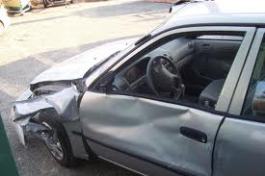There is virtually bound to be some type of legal requirement, wherever you live, for a motorist or car owner to have some type of insurance cover for their vehicle. The legal requirement will be a minimum one, and whatever that requirement is it is advisable to evaluate your needs as a motorist.
If the amount of insurance required by law is not sufficient to meet those needs, then it is advisable to buy additional insurance cover that will meet them. In order to do this effectively you need to know the type of cover that is available, as well as what the legal minimum requirement is in your area.
The idea of a minimum legal requirement is simply to provide some level of liability cover by way of financial compensation in respect of any damages that may be awarded against a driver or agreed in an out-of-court settlement. Often the legal minimum requirement is not deemed to be sufficient to meet potential threats of liability, and it is always a good idea to significantly increase the amount of car insurance policy available if you are able to do so.
Liability in an insurance claim is normally referred to as third-party liability. This means that it provides an indemnity to the policyholder or driver for financial compensation up to a specified limit. In addition the insurance policy may include fire and theft cover and this is commonly known as third-party fire and theft insurance cover.
It is also possible that the third-party liability may be split into liability against property and liability against people either with separate or aggregate limits for both sides.
This is primarily because it is believed there is a potentially lower risk for the so-called property damage as opposed to so-called people injury.
There is some logic to this, but the reality is that the cover that is most important to you is a general liability indemnity that covers you against any damages wherever they may arise from.
The important thing is to make sure that you have sufficient coverage available, and that the insurance company is sufficiently solvent to be likely to be around for several years hence.
The other type of car insurance cover that is normally available is what is commonly referred to as fully comprehensive insurance. This in effect means that in addition to a third-party liability cover, it will also cover the motor car or vehicle up to a specified value which will be reimbursed to you in the event of a claim or total loss of the vehicle or car.
In addition there are other types of extra cover that can be included either as part of the fully comprehensive policy, or as additional benefits for which an additional premium will be payable.
The significance of a fully comprehensive policy is really in the value of the car. In the event of a claim being made and settlement being agreed the amount that will be paid out on the value of the car is the value that the insurance company believes that car is worth on the market at the time of loss.
This is likely to be considerably less than the person believes the car to be worth or the amount which the person paid for the car in the first place. This is a considerable source of tension between an insurance company and the policyholder and is worth flagging up prior to taking out the insurance policy.
It is possible sometimes to have what is known as an agreed value policy, where the value of the car is specified and agreed at the outset the policy. However this is normally only done on high-end value cars where it is difficult to establish a market value, or on vintage or classic cars which will have a high premium in the first place.

